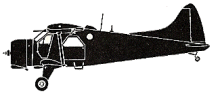
ASN Wikibase Occurrence # 205970
This information is added by users of ASN. Neither ASN nor the Flight Safety Foundation are responsible for the completeness or correctness of this information.
If you feel this information is incomplete or incorrect, you can submit corrected information.
| Date: | Friday 26 October 1990 |
| Time: | 08:40 |
| Type: |  de Havilland Canada DHC-2 Beaver |
| Owner/operator: | |
| Registration: | VH-AAX |
| MSN: | 1411 |
| Year of manufacture: | 1959 |
| Fatalities: | Fatalities: 0 / Occupants: 3 |
| Aircraft damage: | Substantial |
| Location: | Somersby, NSW -
 Australia Australia
|
| Phase: | Landing |
| Nature: | Parachuting |
| Departure airport: | Somersby, NSW |
| YSCN | |
| Investigating agency: | BASI |
| Confidence Rating: |
The aircraft was being ferried to a strip in the Hunter Valley to carry out parachute dropping. En-route, although performance appeared normal, the pilot sensed a possible problem with the turbine engine and landed at Somersby NSW. After landing, a visual inspection of the engine was undertaken and several ground runs carried out, without any defect being found. The pilot elected to return to Camden where further checks could be made. The aircraft took off towards the south and climbed to a height of about 1000 feet, at which point the pilot heard a bang from the engine compartment which was followed soon after by a very loud bang associated with noises described by the pilot as like "forcing a crowbar into the engine". During the ensuing forced landing in fine, calm conditions, the pilot misjudged the final stage of the landing approach, resulting in the aircraft landing very heavily and sustaining considerable damage. A subsequent engineering investigation found the engine had suffered a catastrophic malfunction resulting from fatigue failure of a helical thrust washer from the high speed pinion assembly. The fatigue crack growth resulted from applied alternating loads, probably due to excessive wear of the helical gear shaft bearing. About one week prior to the flight, engine oil sample and filter element had been removed in accordance with Airworthiness Directive AD/TPE 331/9.
Accident investigation:
 |
|
Sources:
https://www.atsb.gov.au/publications/investigation_reports/1990/aair/aair199002017/
https://www.atsb.gov.au/media/26847/aair199002017.pdf
Revision history:
| Date/time | Contributor | Updates |
|---|---|---|
| 11-Feb-2018 07:57 | Pineapple | Added |
Corrections or additions? ... Edit this accident description
The Aviation Safety Network is an exclusive service provided by:


 ©2024 Flight Safety Foundation
©2024 Flight Safety Foundation